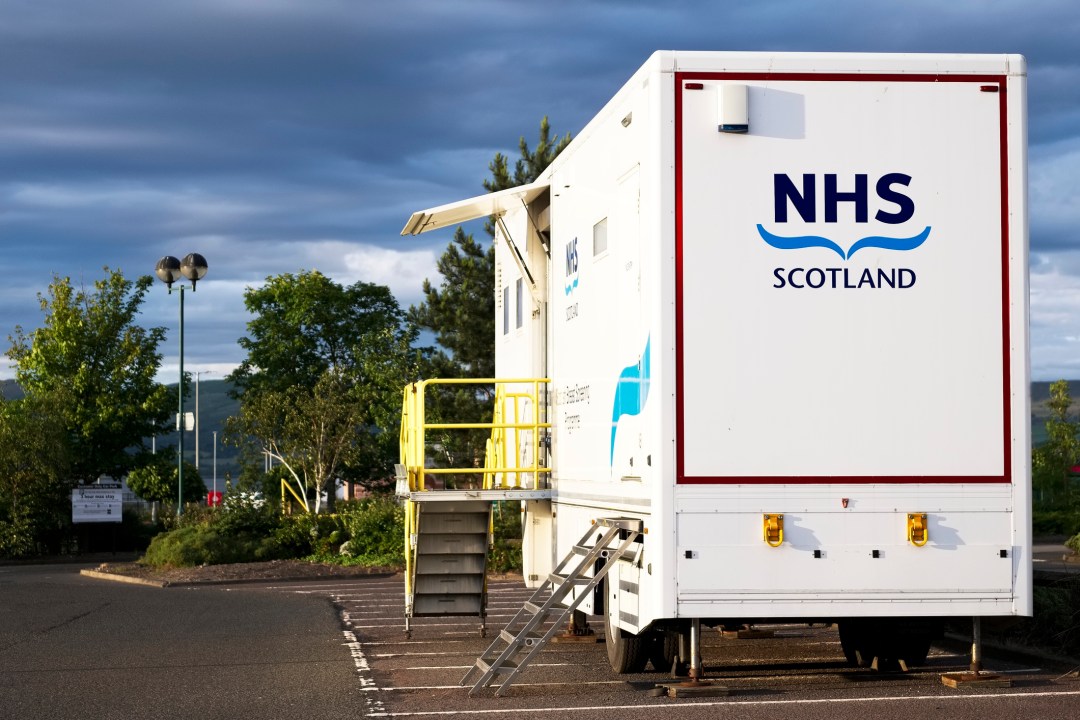Scotland’s NHS has seen its waiting lists, once again, reach record levels. New figures from Public Health Scotland reveal that the equivalent of one in every seven Scots is on a waiting list. Care targets aren’t being met either, and the NHS is falling short on targets set for inpatient and day case waits.
A lot of the blame is being directed at Scotland’s new First Minister Humza Yousaf. From the time he took over as health secretary to the month he left the role, there was an increase of over 175,000 patients on NHS waiting lists, with 779,533 patients on lists at the end of March. Worse still, over 72,000 of the patients currently on waiting lists have been stuck on them for over a year.
The equivalent of one in every seven Scots is on a waiting list
In December, BMA chair Dr Iain Kennedy warned that the very survival of NHS Scotland was threatened, highlighting the service’s workforce crisis and saying that ‘Scotland’s overstretched NHS is on its knees’. In fact, Kennedy went so far as to call for the resignation of then-health secretary Yousaf. He wasn’t alone, his calls echoed by a number of others.
But Yousaf remained in post and continued to point to his work on the health brief as a strength during the SNP leadership race. Meanwhile, the pressure on the NHS continued to build. Over 2,500 patients joined outpatient waiting lists in the first three months of 2023, while just under 3,000 people were added to inpatient lists during the same period. The numbers of those waiting on diagnostic tests, like endoscopies and colonoscopies, increased by 4,300.
The latest planned care target aimed to stop patients waiting over a year for appointments in most specialities by the end of March. Yet the figures show there were still 31,498 patients waiting over 52 weeks for care at this time.
A new national standard aims to ensure that 95 per cent of new outpatients are left on waiting lists for no longer than 12 weeks. During the last three months, however, the number of waits ‘completed’ – with the patient being seen – in 12 weeks or less has decreased by 1,125 compared with the previous quarter. Worse still, a staggering 10,000 more patients have had to wait longer than 12 weeks to be seen during the first three months of the year compared to the quarter before that, from 107,925 to 118,402.
NHS Scotland’s ‘treatment time guarantee’ says that, following a clinical decision to embark on treatment, ‘all eligible patients should wait no longer than 12 weeks for treatment as an inpatient or day case’. The first three months of 2023 saw a small increase (of 266) in those patients who received treatment within 12 weeks compared with the previous quarter. But it also saw a larger increase in patients waiting longer than 12 weeks: with 762 more patients. This brings the total number of people waiting more than the target time to just under 25,000.
Scottish Labour’s health spokesperson, Jackie Baillie, labelled these new figures as Yousaf’s ‘catastrophic legacy as health secretary’, saying: ‘Michael Matheson must deliver a real plan to help our NHS recover from the damage inflicted first by the pandemic and then by his predecessor.’ The Scottish Conservatives health spokesperson, Dr Sandesh Gulhane, has pointed to the impact of waits on mortality rates: ‘In the worst-case scenarios, these delays lead to needless deaths.’
‘Challenges remain and there are still unacceptable waits in some specialities, but we remain committed to delivering sustained improvements,’ health secretary Michael Matheson has said in response to today’s data. ‘The Scottish government continues to work closely with NHS boards to maximise capacity and reduce the length of time people are waiting for appointments and treatment.’
Numbers aside, the pattern is clear: waiting lists are growing and patients continue to face daunting delays. When he became First Minister, Yousaf decided to rename the health brief, making Michael Matheson the cabinet secretary for ‘NHS recovery’, as well as health and social care. Scots will hope this wasn’t just a performative gesture. Pressures on other parts of the health service – like its staffing crisis – are only getting worse, and patient demand isn’t going to ease off anytime soon.








Comments